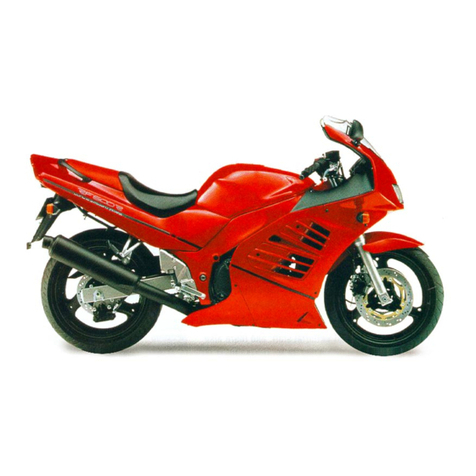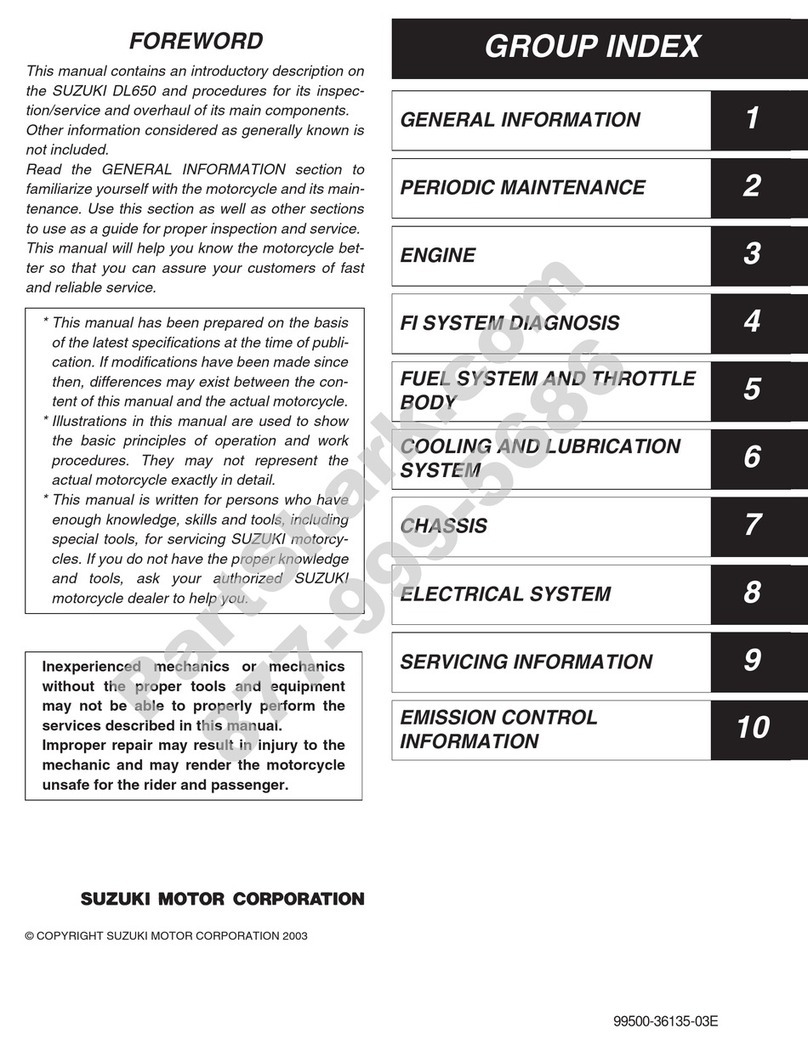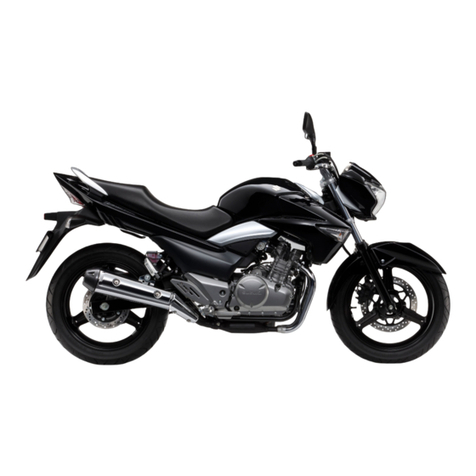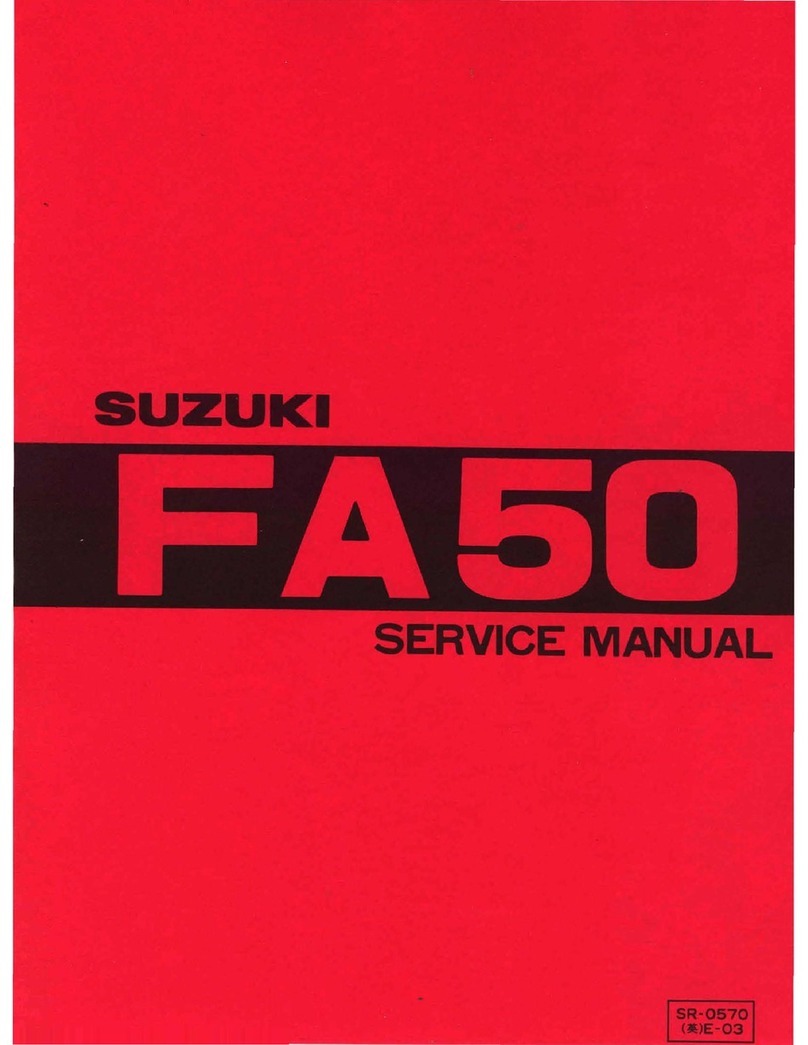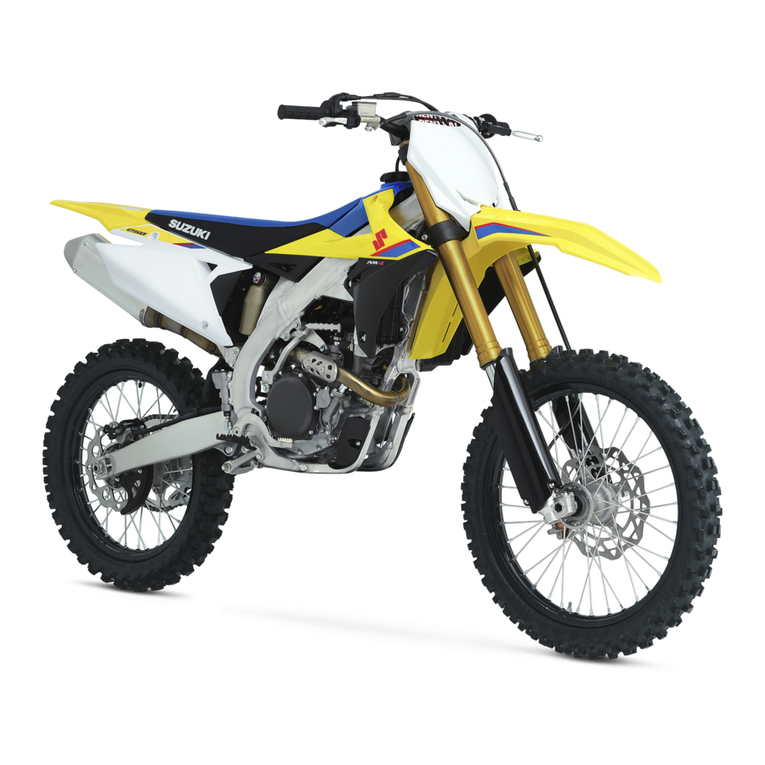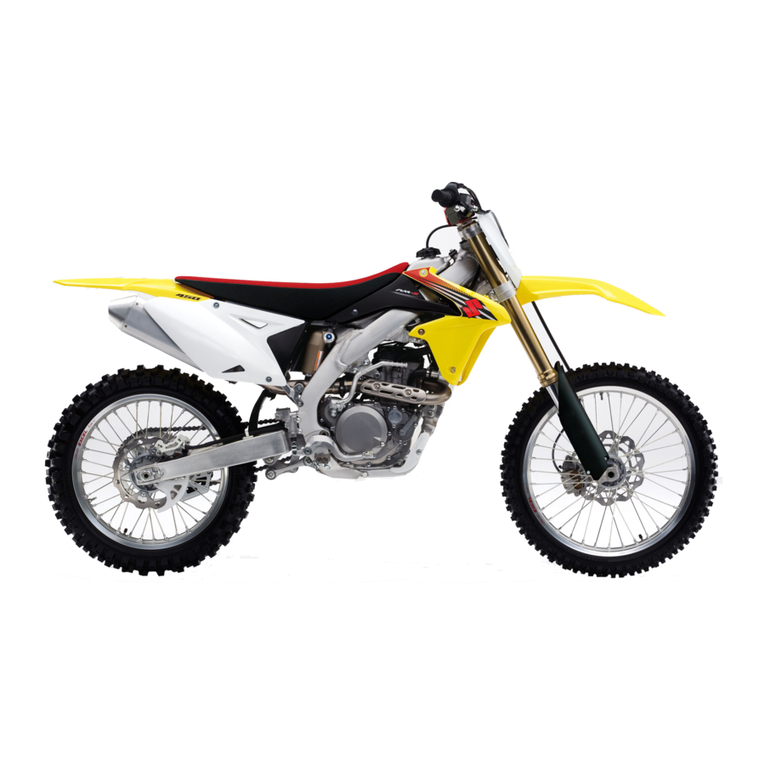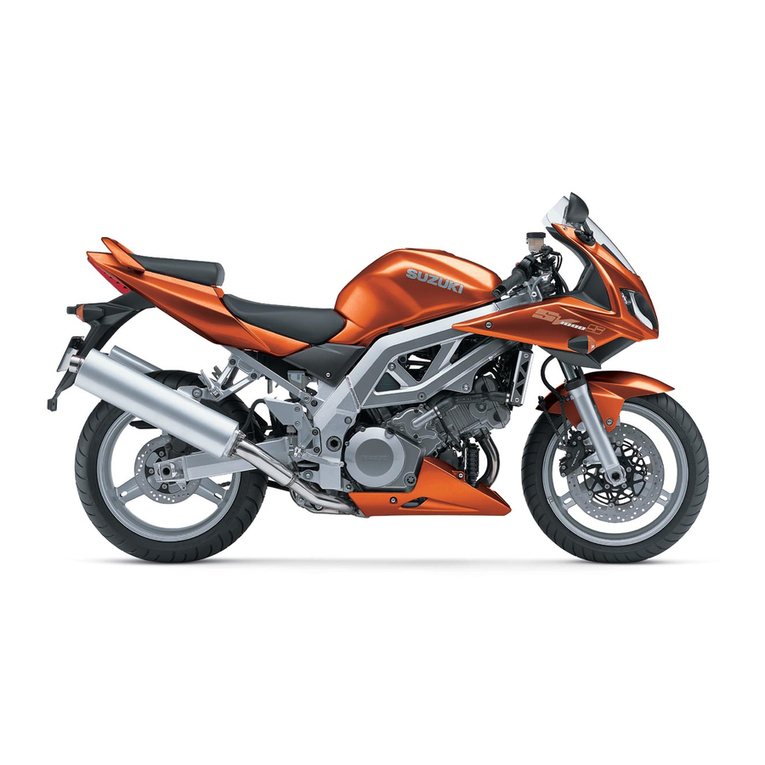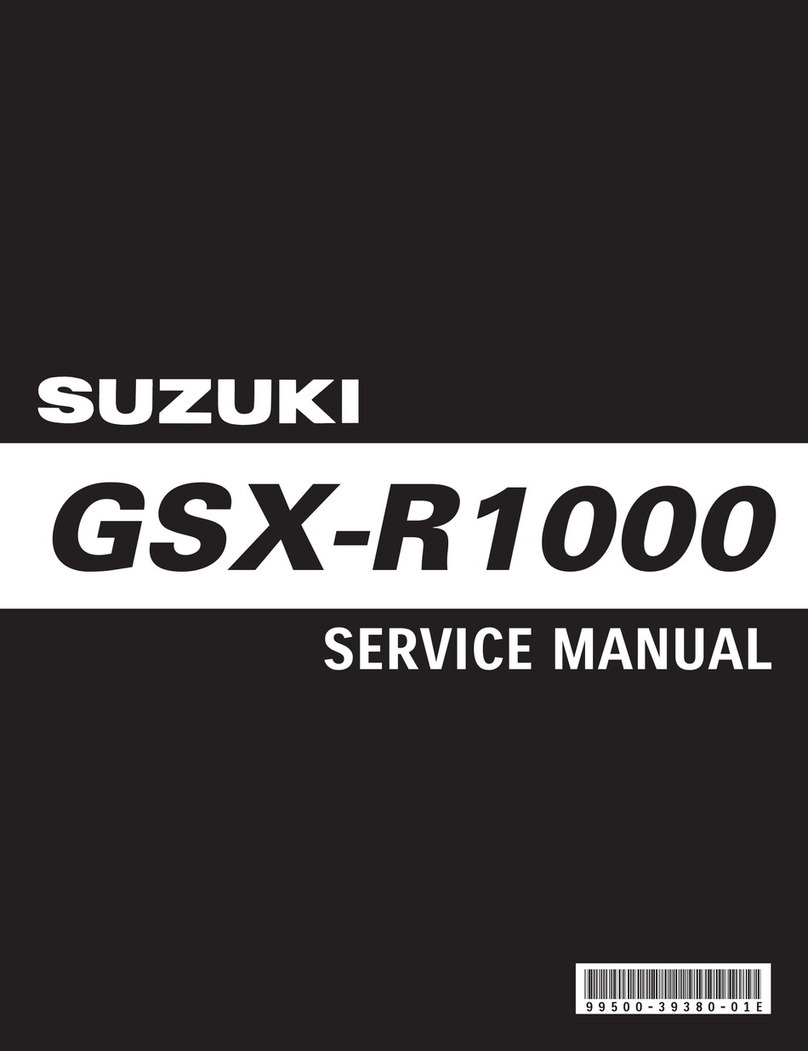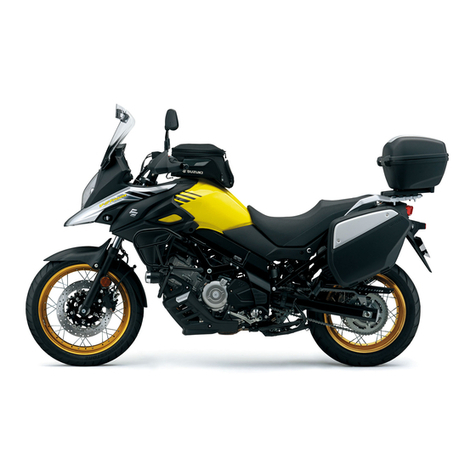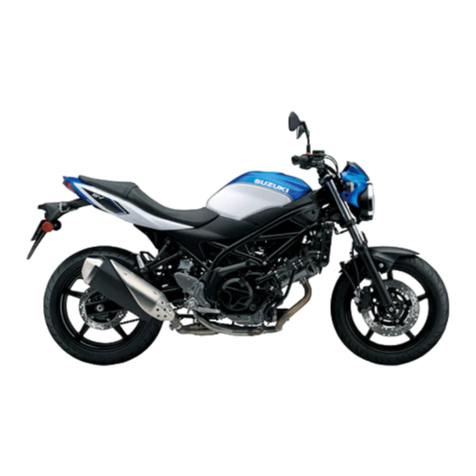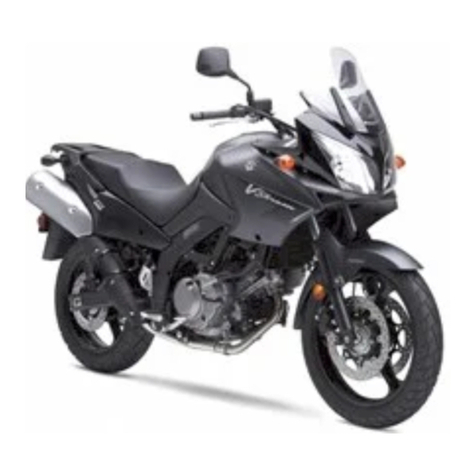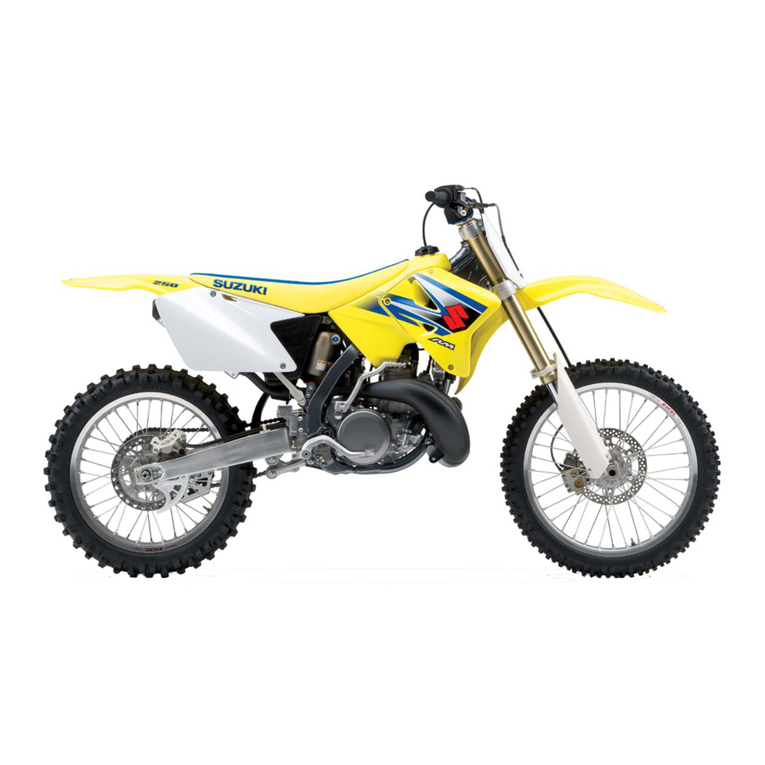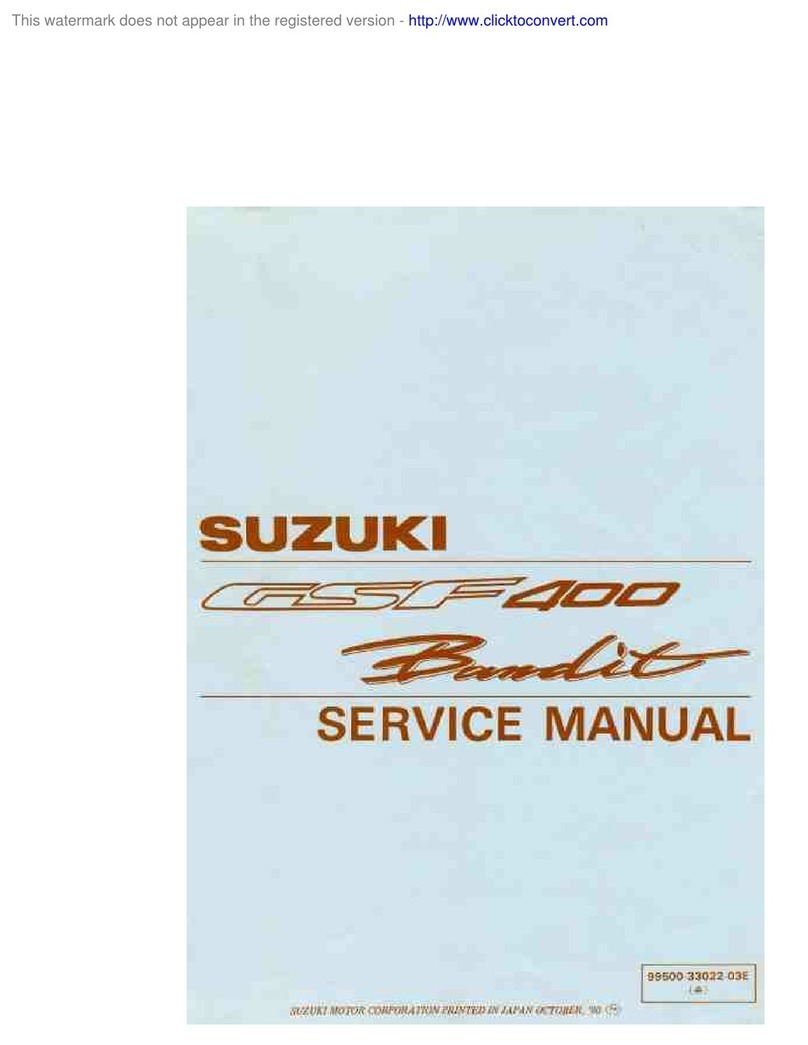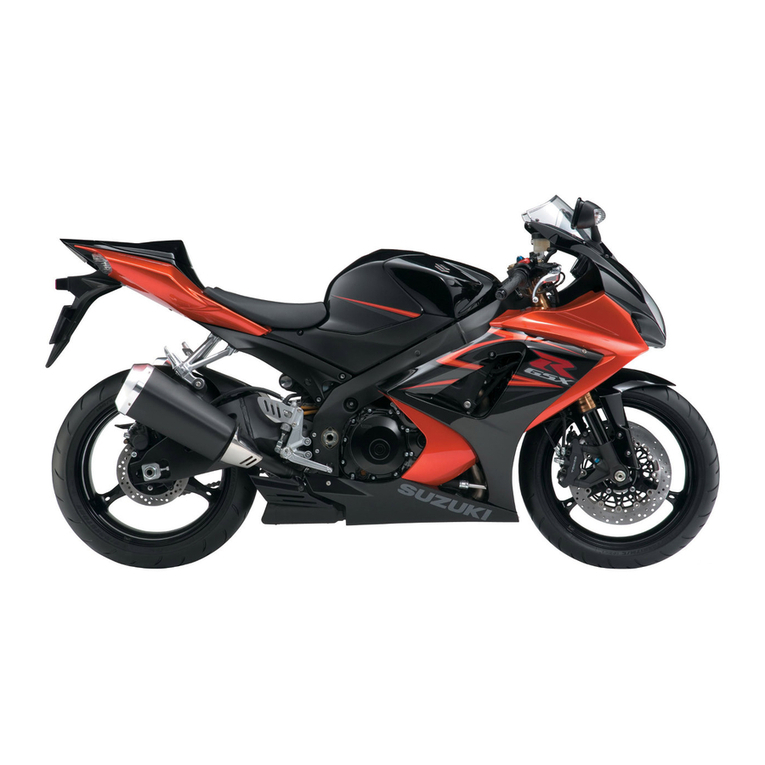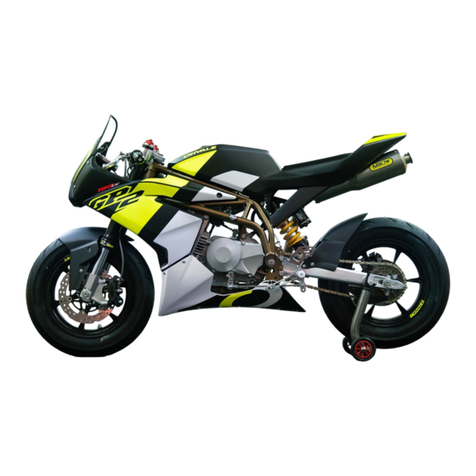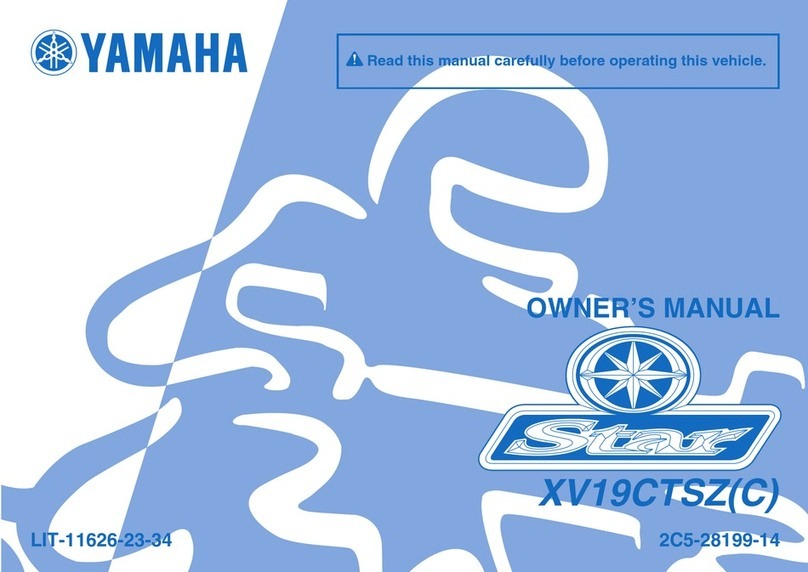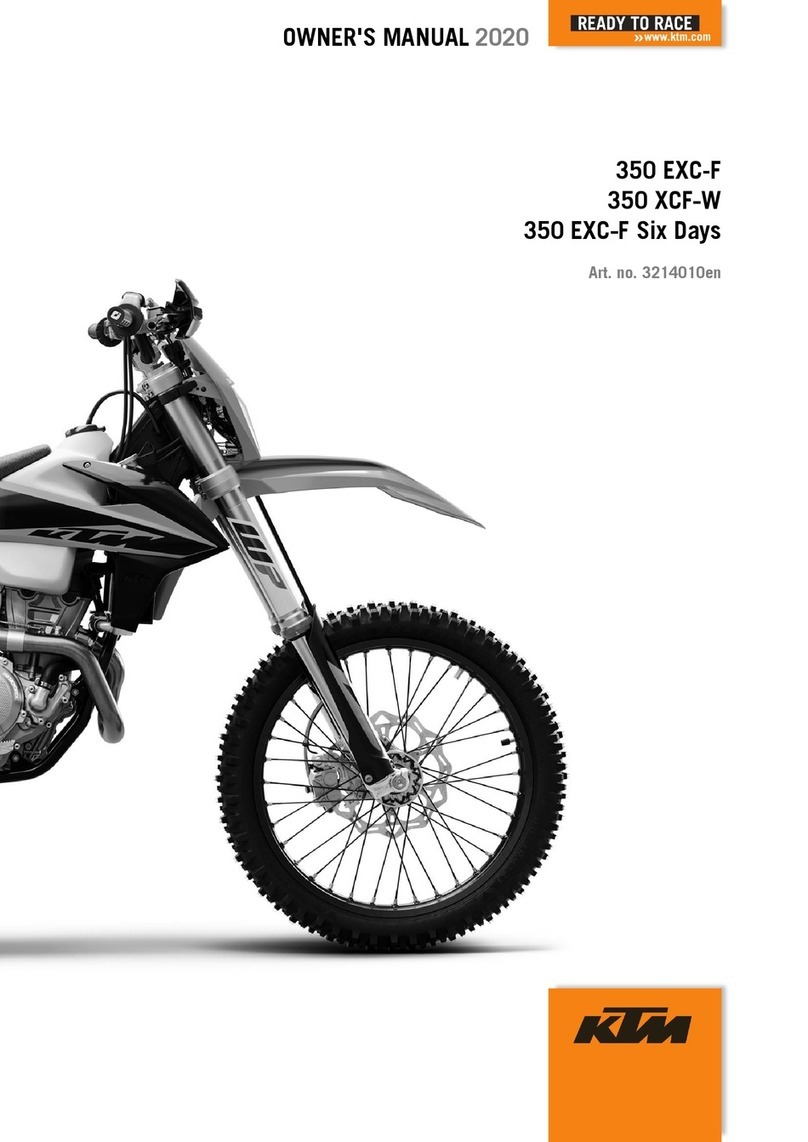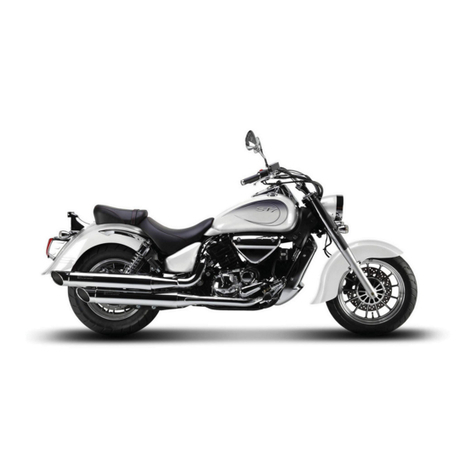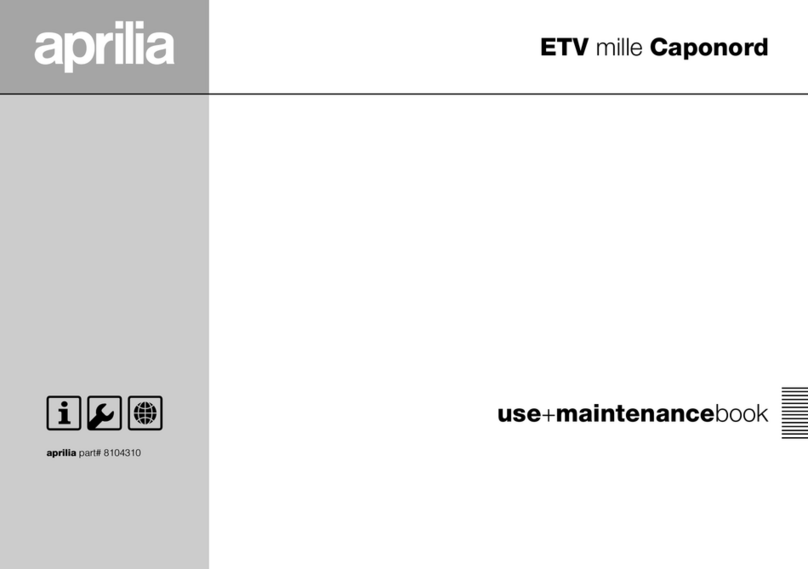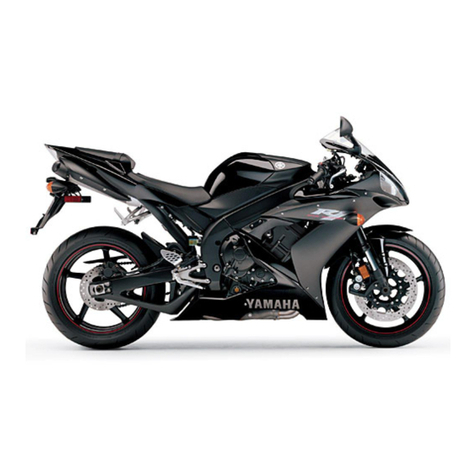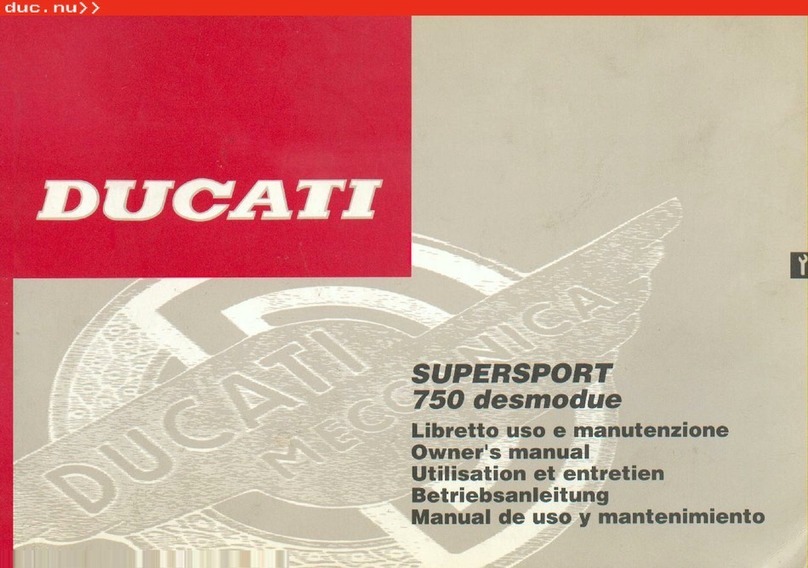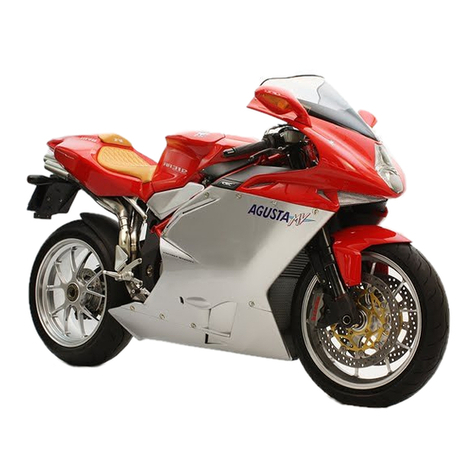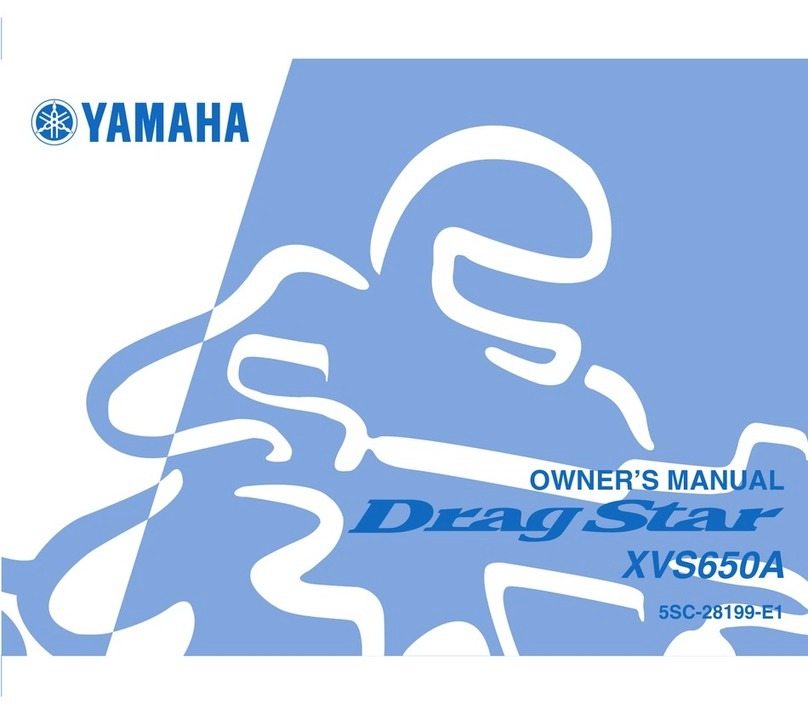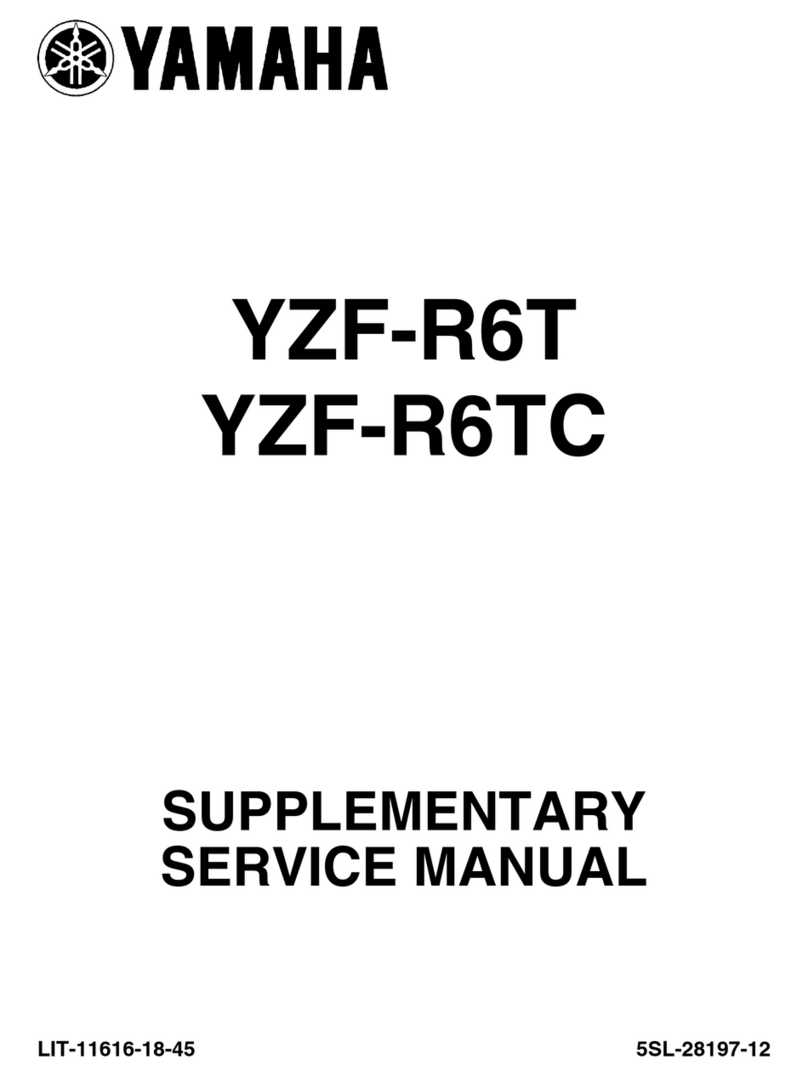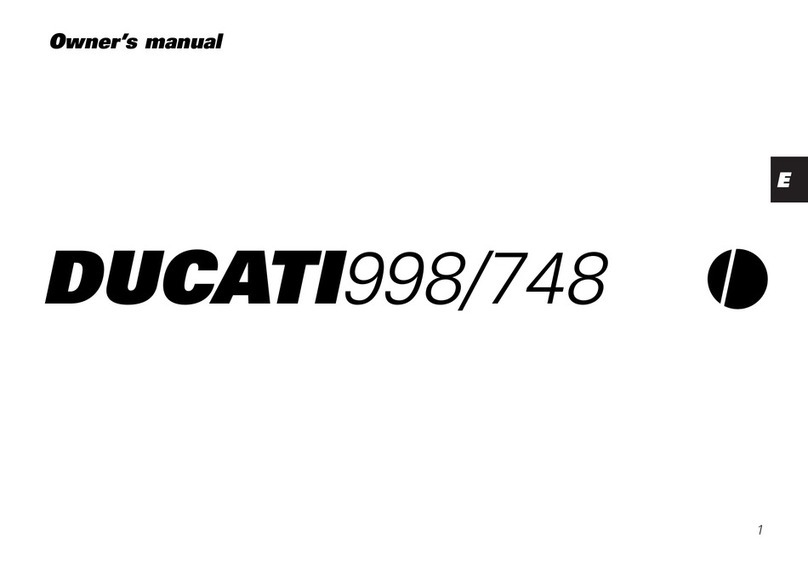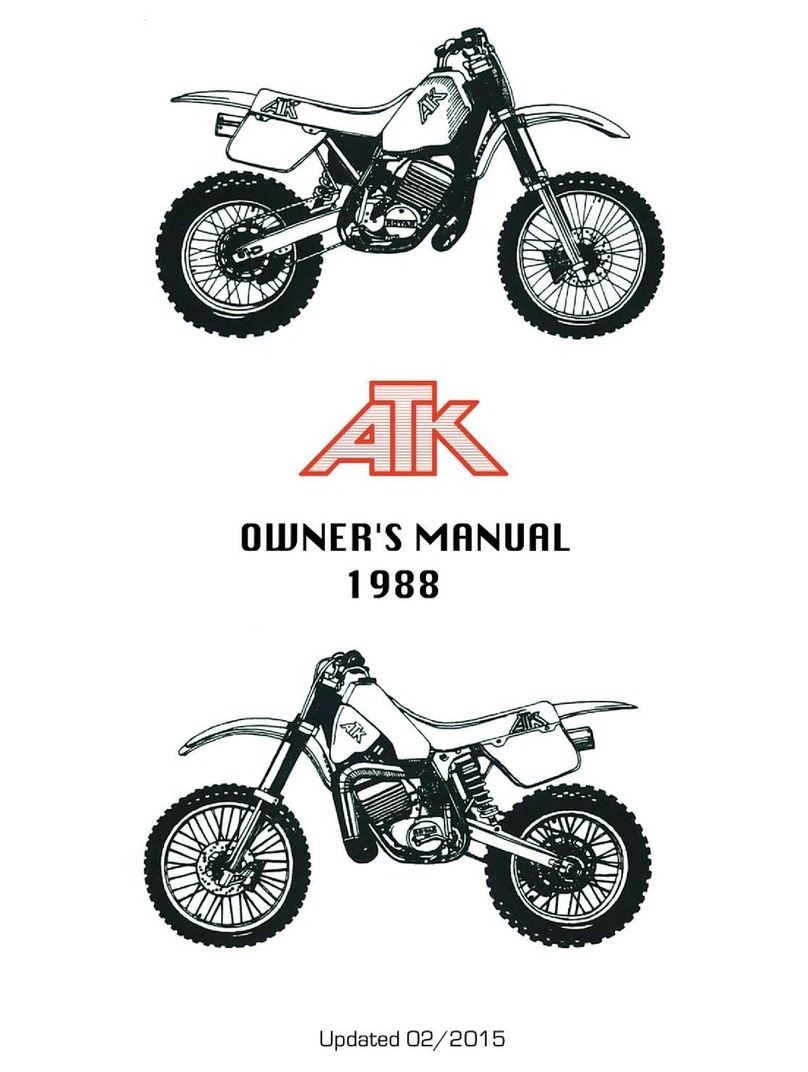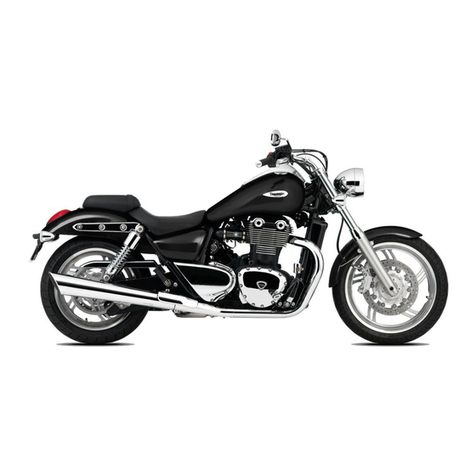
K3 (ENGLISH • FRENCH)
SUZUKI MANUFACTURING OF AMERICA CORPORATION
April ’02 Printed in United States (MP) 28
99505-01013-01T
FOREWORD
This vehicle has been designed and produced utilizing
Suzuki’s most modern technology. The finest product, how-
ever, cannot perform properly unless it is correctly assem-
bled and serviced. This set-up manual has been produced
to aid you in properly assembling and servicing this vehicle.
Please review this set-up manual carefully before perform-
ing any work. Take special care to properly perform the
required assembly and servicing marked by either a Warn-
ing or a Caution. Failure to follow the directions in either of
these two (2) categories could lead to serious problems.
!" and #areas are denoted to
emphasize certain areas and carry the following meanings:
!
Indicates a potential hazard that could result in death or
injury.
#
Indicates a potential hazard that could result in vehicle
damage.
This set-up manual is based on a vehicle of standard speci-
fication. Some minor differences from this manual may be
found in other specifications.
AVANT-PROPOS
Cette véhicule a été conçue et produite en utilisant la tech-
nologie la plus récente de e Suzuki. Le meilleur produit,
cependant, ne peut pas fonctionner de manière satisfai-
sante à moins qu’il ne soit correctement assemblé et entre-
tenu. Ce manuel d’assemblage a été rédigé pour vous aider
à effecteur correctement l’assemblage et l’entretien de cette
véhicule.
Prière de se familiariser avec ce manuel d’assemblage
avant de commencer les travaux. Faire particulièrement
attention à effectuer correctement les travaux d’assem-
blage et d’entretien indiqués sous les titres Avertissement
et Attention. Ne pas suivre les directives de ces deux (2)
catégories pourrait causer de sérieux problèmes. Les titres
et ont pour but
d’insister sur certains points et ils ont les significations sui-
vantes:
Indique un danger qui pourrait provoquer la mort ou
une blessure.
Indique un danger qui pourrait provoquer un endom-
magement du véhicule.
Ce manuel d’assemblage est basé sur la véhicule aux
caractéristiques standard. Dans certains cas, certains diffé-
rences mineures peuvent apparaître par rapport à ce
manuel.

